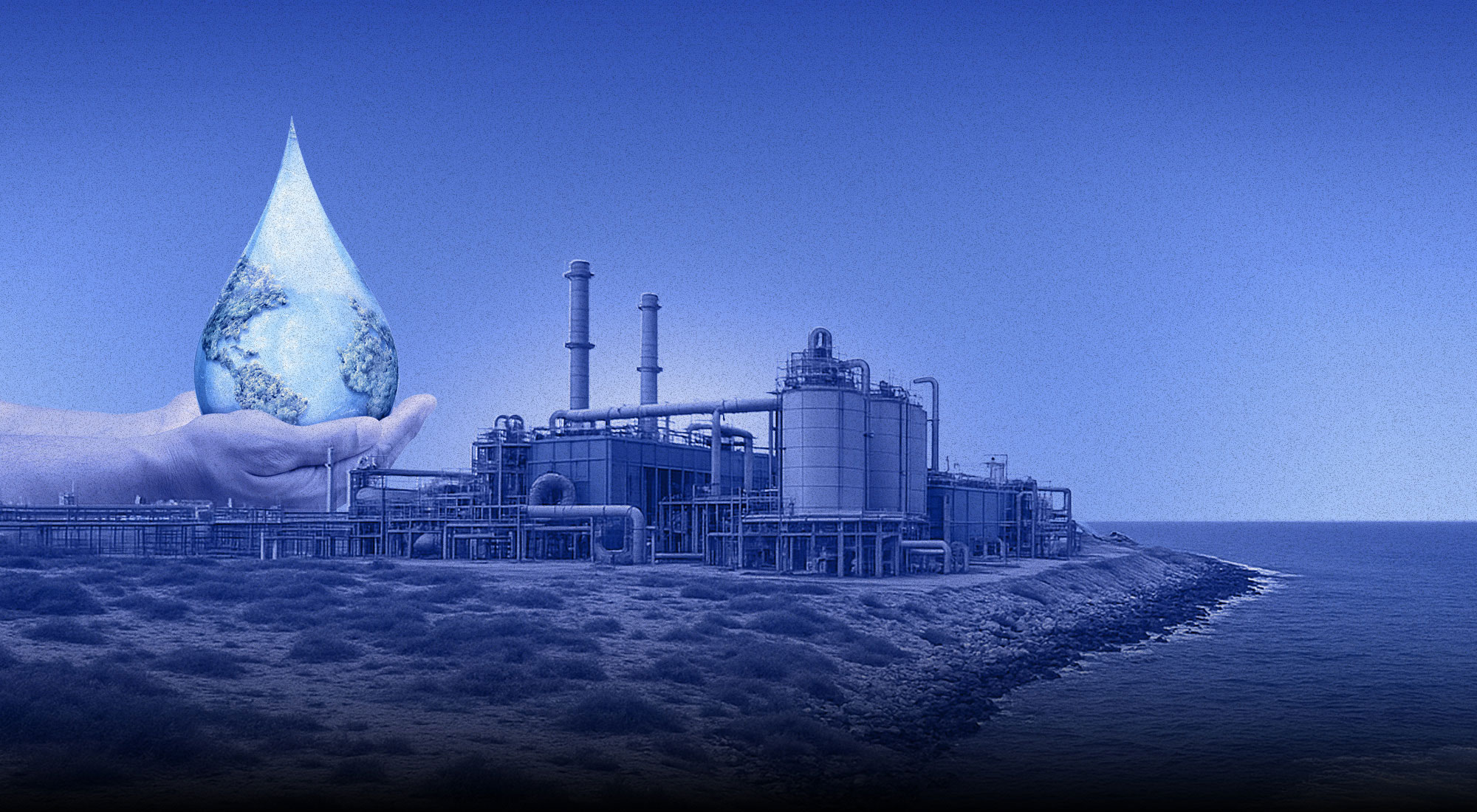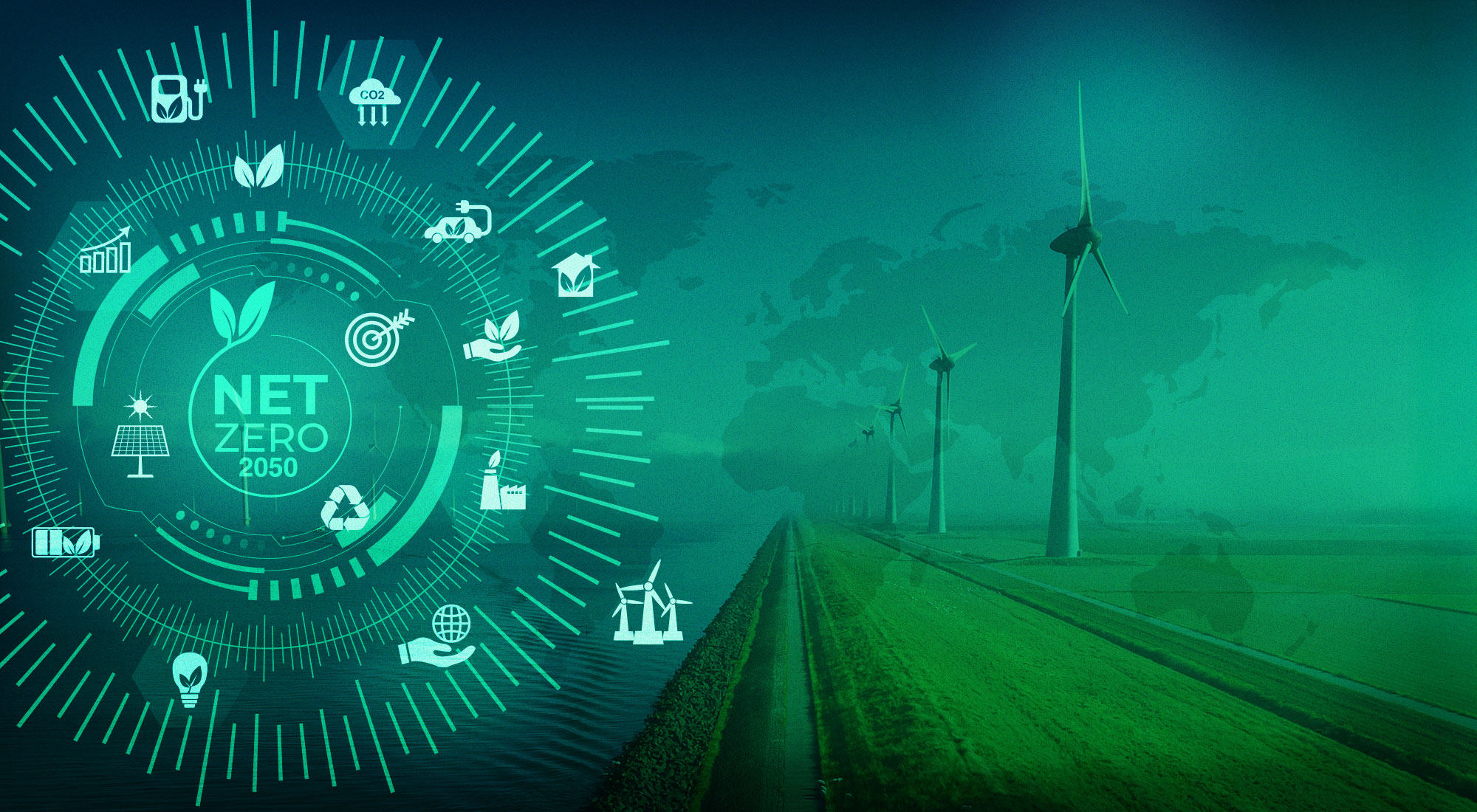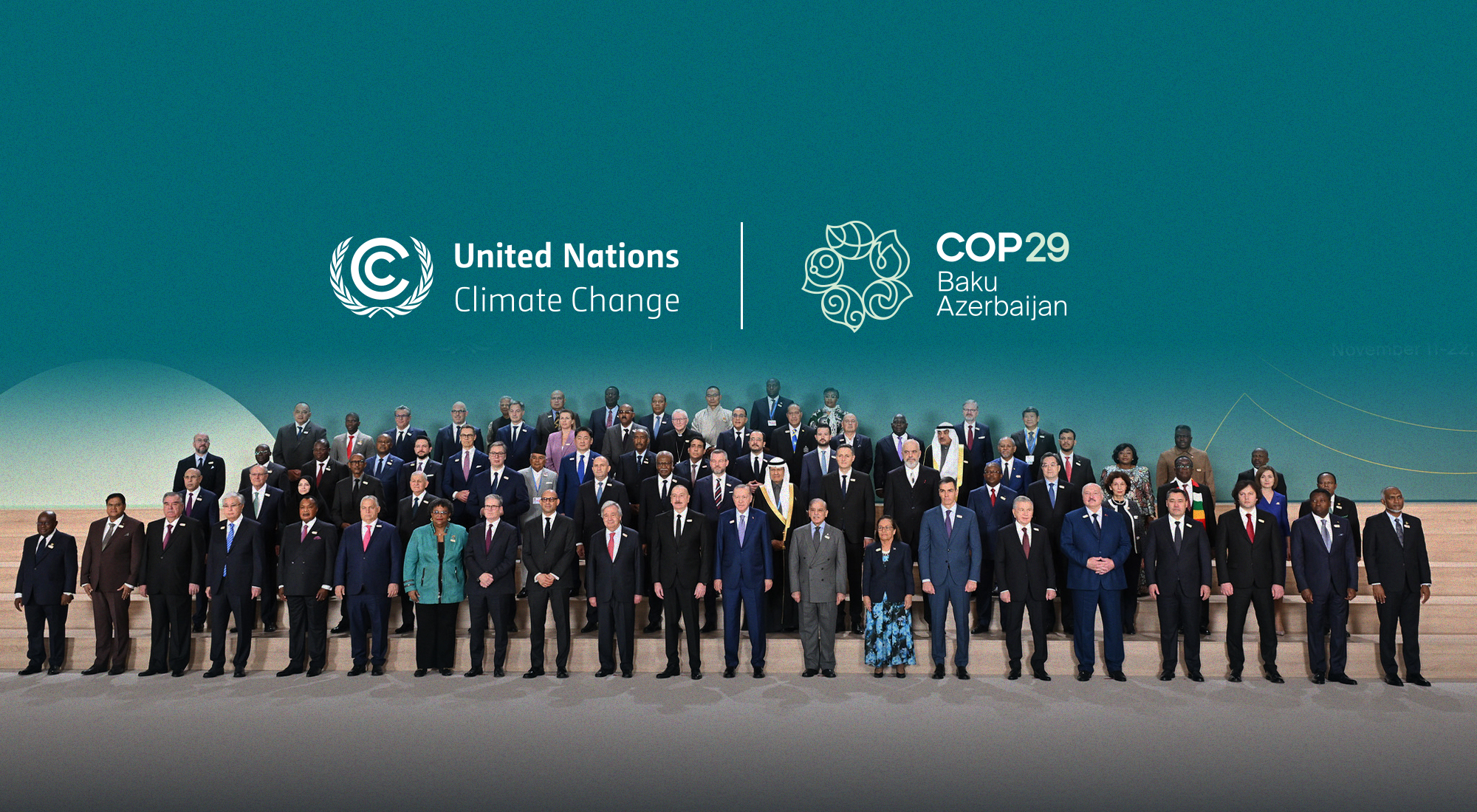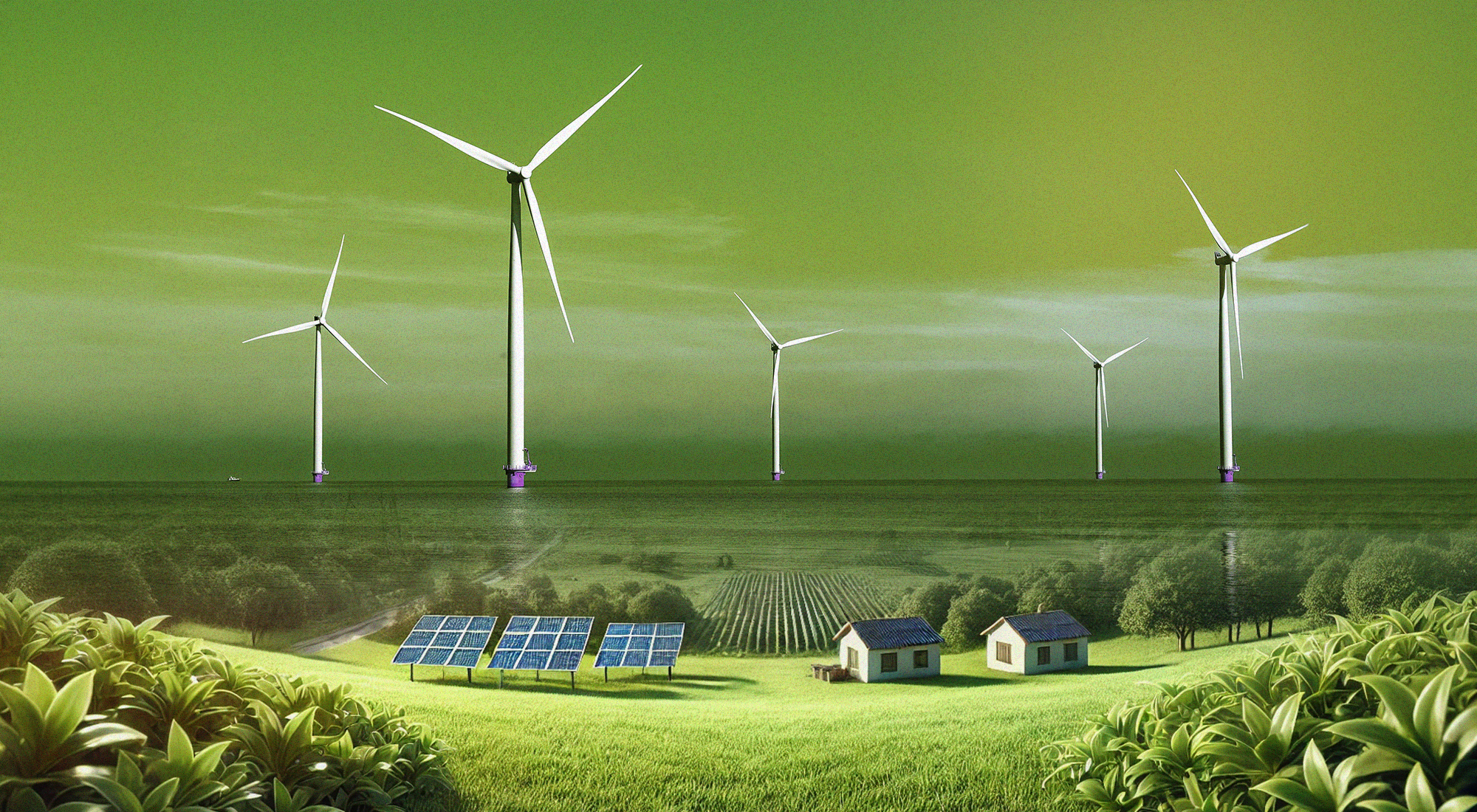Introduction
As a continent, Africa has contributed less to global emissions and climate change than any other continent, yet Africa remains disproportionately affected by climate change. According to the World Meteorological Organization (WMO), Africa accounts for only 2-3 percent of global greenhouse gas emissions.[1] However, African countries and Africans are currently bearing a very uneven share of the global impact, directly and indirectly. The African continent suffered great climate damages in 2019 alone. Southern Africa encountered severe droughts, while most of East Africa suffered from both droughts and severe flooding.[2] Mozambique was hit with a damaging cyclone that spread to neighbouring countries. In West Africa, rising sea levels led to coastal degradation and over 50 percent coastline erosion for countries like Senegal, Togo, Benin and Ivory Coast.[3] Desertification and droughts in certain areas of northern Nigeria have severely hampered local communities, who are largely dependent on rainfall for agricultural production.[4] This, in part, has exacerbated herder and farmer clashes due to climate forced migration.
Given Africa’s relatively meagre contributions to the acceleration of climate change and the current arrangements of the global economy, Africa faces a complex task for its unity and future. The global economy has never been a fair playing ground, especially for Africa, and it is naive and very idealistic to assume that fairness is an actively observed principle. One cannot discuss and fully understand Africa’s perspective on climate change without examining the role globalization, industrialization, consumerism and neo-colonialism have played in accelerating the impending disaster. The nature of the Global North (industrialized, developed nations) and Global South (developing and underdeveloped nations) relationship has been imbalanced and costly to the planet, in both human and natural resources. Responses to climate change and the COVID-19 pandemic further amplified the Global North–Global South relationship.
The purpose of this paper is to first and foremost provide an African perspective on climate change adaptation in a concise manner. To aid the framework of this crucial topic and perspective of a continent with over a billion people, a brief yet important historical foundation is imperative. Wallerstein’s World-Systems Theory, discussed below, helps to lay that foundation. The next section examines the current continental framework for climate adaptation, with three country specific perspectives on adaptation. The third section looks at the landmark COP27 agreement and what that means for Africa. Would Africa be able to get a breakthrough in its justified demands for climate compensation funds? The paper concludes with pragmatic steps forward.
Historical context of world systems and the global economy
One must analyse the preceding history for greater understanding as to why Africa has suffered significantly from climate change and environmental degradation actions, while receiving little to no compensation. That Africa seeks to create its own path to sustainability and survival is not an act of rebellion. The framework of the global economy, as it is currently, is not a natural creation, nor has it favoured African countries. The World-Systems Theory as espoused by Wallerstein is a sufficient starting point for the purpose this paper seeks to achieve. Wallerstein’s World-Systems Theory divided the world into three areas – core, semi-periphery and periphery.[5] The core comprised of wealthy and powerful states predominantly in North America, Europe and Australia. Nowadays, one can find some industrialized Asian states as part of the core. Frank Elwell describes the possession of power – economic, political and military – as a mechanism “to enforce unequal rates of exchange between the core and the periphery.”[6] The extension of the core’s power has width and depth. The core has engaged its power overtime to use peripheral nations as dumping grounds for unwanted goods, obtain raw materials for cheap prices, exploit available labour and the environment, and disregard domestic labour force and consumers, while also setting up barriers for trade.[7] Thus, discussions on climate change inequality and environmental abuse cannot discount this global economic arrangement and pattern.
The semi-periphery states are those considered to be in the middle of the global systems bifurcation. These states have the ability to exploit the periphery to some extent, but they are largely exploited by the core.[8] Wallerstein described them as “a necessary structural element in a world-economy,” in addition to being strategically positioned as “collection points” for critical skills.[9] Semi-periphery states do not share similar interests to those of the core and therefore they tend to be at odds; however, they are likely to prefer a shift to the core than to the periphery.
The peripheral states lag the most in development and they are also the most exploited for cheap labour as well as for agricultural and numerous natural resources.[10] The periphery is often viewed as a place for extraction of resources and resale of finished goods. The majority of the countries in Africa fall into this category. Exploitation of the African continent for industrialization of the Global North has had damaging impacts on the psyche, environment, domestic economies, and economic growth of the continent. The core countries have benefitted and still benefit tremendously from an uneven global economy. The cost of the core’s industrialization has been severely burdened by Africa, Latin America, and some Asian countries.
In an increasingly globalized world with technology, creativity and innovation reaching new heights, resource competition has perhaps never been more intense. A brief purview of economics shows that resources are scarce, which invariably means there will be competition. Competition, in turn, enforces the desirable and profitable idea of comparative advantage – producing at a relatively lower opportunity cost than one’s competitor. Competition will often require the use of power – political, economic, geographic, state-backed, etc. Those who have greater power will use it directly or indirectly. Capitalist competition and putting profits first over people has contributed significantly to the exploitation of the world’s resources. While the core has harboured an exploitative attitude and approach to natural resources, countries of the periphery tend to have a “firmer ethnic of protection” towards their environment.[11] This contributes to cautious decision-making regarding climate adaptation for some African-peripheral countries.
It is imperative to know that the Global North and South are unmistakably different in many ways, particularly in consumerism habits influenced by low prices. As standards of living improve and wages increase, consumers in the Global North seek luxury and affordable goods. Corporations and businesses, in turn, have to maximize profits by incurring low cost of production, thereby going south. Meanwhile, the Global South – semi-periphery and periphery – provides much needed labour at great physical cost for sweatshop wages that go against basic human dignity, labour laws and fair pay. The increased pressure on natural resources to assemble and produce most of the luxury, clothing, electronic and tech products used in the Global North leads to the ‘environmentalist’s paradox’. The environmentalist’s paradox is the idea that the earth and its ecosystems are undergoing degradation, yet humans are better off, thus prospering.[12] This idea remains flawed, especially for African countries, because it poses short- and long-term implications. If prosperity comes at the great expense of a certain region of the world or on the backs of poor people, is that commendable or sustainable?
Climate change adaptation in Africa
More than half of Africa’s total population depends on agriculture for a living, whether from small, medium or large-scale agricultural practices. Many livelihoods, families and communities are at threat due to climate change effects and climate adaptation policy inaction. Food insecurity in Africa is rising – with more than 280 million Africans impacted – and is being further compounded by long droughts in the Horn of Africa.[13] Food insecurity poses great danger to climate adaptation, but more so, it is a product of the current climate disaster Africa faces. To address food insecurity and its by-products (malnutrition, communal clashes, etc.), urgency in adaptation is a must.
The most comprehensive continent-wide adaptation framework is the Africa Adaptation Acceleration Program (AAAP). The AAAP is wholly African in creation and leadership. The AAAP was conceived as a response to the continent’s pressing demands and focus to “reduce its vulnerabilities to climate change as well as harness the economic growth opportunities that result from effective climate adaptation.”[14] Regarding consensus, the AAAP has been widely accepted by African heads of state and governments in line with the actualization of the Africa Adaptation Initiative (AAI) vision.[15] In 2020, the Global Centre for Adaptation (GCA) Africa was launched by African leaders to fight climate change. The GCA’s regional office is situated in Abidjan, Ivory Coast, with the African Development Bank (AfDB) as its host institution.[16] The AAAP, AfDB and GCA, through the president of the AfDB, Akinwunmi Adesina, began mobilizing a climate finance fund to the tune of $25 billion by 2025 to speed up adaptation. An amount of $12.5 billion was committed by the AfDB at the launch of the AAAP.[17]
The core pillars of the AAAP are: (1) Climate-Smart Digital Technologies for Agriculture and Food Security; (2) African Infrastructure Resilience Accelerator; (3) Empowering Youth for Entrepreneurship and Job Creation in Climate Adaptation and Resilience; and (4) Innovative Financial Initiatives for Africa.[18] The AAAP is a giant step in the right direction for the continent of Africa, but it is also worth noting that tailoring adaptation to country-specific needs is necessary. This would prevent blanket policies and solutions that do not fit the respective climate adaptation idiosyncrasies in Africa. Below are some country specific examples on adaptation.
The Gambia
Mainland Africa’s smallest country has been suffering from climate actions that are the doings of others; however, challenges have been gradually turning into opportunities. The country of approximately 2 million people has been making positive and commendable strides in addressing climate change and adapting to it. How are they making progress? The Gambia has over the years been working on changing its rice cultivation process, as well as its livestock management.[19] These are just two concrete plans related to adaptation. This has been beneficial and has had a significant impact on an economy heavily reliant on remittances and agriculture. Over time, the Gambia River has been intruded by saltwater, altering the flow of water into the opposite direction due to rising sea levels and low rainfall.[20] Fishing has thus been greatly impacted as a result. However, developments such as these have prompted the Gambia to change its local food production processes and take the lead in climate adaptation and initiatives.
Kenya
In Mukueni, a county in Kenya, smallholder farmers are spearheading a climate smart approach to agriculture. According to the Food and Agriculture Organization (FAO), climate smart agricultural practices include increasing productivity, building resilience, and reducing the emission of greenhouse gas.[21] In a bid to stem climate risks and diversify incomes, smallholder farmers in Mukueni “combine crop production and animal husbandry with craft-making, seasonal trade and migration.”[22] This pragmatic approach helps to starve off the far-reaching effects of climate externalities like droughts on agricultural finances. Additionally, many smallholder farmers have developed a community-based risk-management strategy; for instance, mobilization of village members to help in land preparation and harvesting, and the construction of various water projects like sand dams.[23]
Nigeria
Africa’s largest economy and its most populous nation has been hit hard over the years with several climate-induced challenges resulting in human, material, and environmental losses. As a country ranked among the most vulnerable by both the 2014 World Climate Change Vulnerability Index and the Notre Dame’s Global Adaptation Initiative Index,[24] Nigeria is on a dangerous climate path with urgent need for adaptation. Without the right adaptation strategies and implementation, by 2050, Nigeria losses are estimated to be in the region of $100 billion to $460 billion.[25] Implementation of Nigeria’s adaptation strategies have been far from impressive, thus far, with several initiatives and frameworks established at the federal level. However, at the state and local government level, adaptation is lacking in both framework and implementation. Some of the most detailed adaptation policies and projects include the Nigeria Erosion and Watershed Management Project (NEWMAP), Building Nigeria’s Response to Climate Change (BNRCC) project, and the Great Green Wall initiative.[26] These projects have been in collaboration with development partners like the World Bank, Canadian International Development Agency (CIDA), and the African Union.
Post COP27: Where does Africa stand?
The landmark decision for the establishment of a loss and damage fund alongside its operationalization at the United Nations Framework Convention on Climate Change (COP27) was a major takeaway from Sharm-el Sheikh, Egypt. That African countries should be compensated is a view held with very little contention on the African continent. However, how and when that would be done remains very unclear. Hesitancy and lack of financial commitment in this case is tantamount to a further climate catastrophe for Africa and invariably the world. Former World Bank Vice-President for East and Southern Africa, Hafez Ghanem, hailed the loss and damage fund as an “excellent initiative”, but thus far “an empty box with no financing.”[27] Multilateral financial agreements are rarely straightforward, and the loss and damage fund is no exception.
The UN Environment Programme’s (UNEP’s) 2022 Adaptation Gap Report shows the huge financial commitments needed while also highlighting the enormous deficit. By 2030, climate adaptation for developing countries could cost between $160-$340 billion yearly, with an estimated rise to US$565 billion by 2050, if climate change worsens.[28] Financial commitments in the international arena remain a far from linear process. Now, with Africa at the forefront demanding compensation and commitment from the West and Global North, the reception has been far from welcoming. Africa needs $33 billion annually to finance adaptation; however, only $6 billion has been made accessible.[29]
Given the general lack of significant financial commitments and apparent lack of urgency, a new climate financing institution has been propagated by Ghanem. The proposed “Green Bank” would be different from existing multilateral development banks in both operations, funding and membership. One of the major differences would be that “its capital would be open to the private sector.” Furthermore, countries of the Global South would have an equal say and footing as those of the Global North.[30] In the event that the Green Bank becomes a reality, Global South countries would have an effective platform for united decision-making regarding climate change. However, due to the absence of a ‘climate police’ with the ability to compel order and commitment, proposed institutions and funds run the risk of failing to materialize. Bifurcation of the world means that Global North countries are likely to demand greater control or potentially leave when terms become unfavourable to them. The voice of the African Union, African development agencies, and regional economic blocs must be united and louder than ever before.
Conclusion
History remains a guide as to how the world and planet Earth reached alarming points of climate disaster. Discounting the role of the Global North and Global South relationship, globalization, consumerism, neo-colonialism, etc., in accelerating the current climate scenario is a blatant attempt at altering reality. Thus, to avoid the mistakes of the past and seek a comprehensive roadmap forward, Africa and Africans must remain vigilant in the fight against climate change and the narratives surrounding it. Unchecked behaviours repeated over time run the risk of becoming the norm, eventually yielding the question: “How did we get here?”
Unsurprisingly, the core has failed to internalize the cost of its rapid industrialization and growth at the expense of human capital and environmental resources. Thus, the climate dangers facing the world, and Africa in particular, is not a surprise checkmate. The classification of countries based on power and wealth, and the subsequent categorization based on geography and resources, is a simplistic yet necessary deconstruction of how the global economy has been organized.
The continent of Africa stands at a delicate climate juncture. Saddled with fiscal constraints, run-on effects of the pandemic, and global economic disruptions, there is hardly any room for relaxation. With severe effects of climate change being felt disproportionately by Africa’s environmental ecosystems and Africans, immediate adaptation action is vital. If historical precedents are anything to go by, then the road to full compensation and urgent climate action remains long and lonely as it stands.
Regardless of the challenges, some African countries have found ways to adapt given their country-specific needs. However, immediate and long-term climate adaptation would require robust strategic framework development, huge financial commitments, and climate adaptation policy continuation regardless of domestic political changes. The AAAP is a welcome development with great potential for continental uniformity in adaptation. However, adaptation at the continental, national and local levels must remain inclusive, flexible and receptive to specific country and local community needs. Africa’s demands of the Global North’s financial commitment are not extreme; in fact, it should be the basis for further pertinent discussions.
References
[1] World Meteorological Organization (WMO), “State of Climate in Africa Highlights Water Stress and Hazards,” September 8, 2022, http://bitly.ws/B6zq.
[2] Kieran Cooke, “Africa’s Resistance Grows as Climate Crisis Worsens,” Climate News Network, October 29, 2020, http://bitly.ws/B6HB.
[3] Ibid.
[4] Hemen Mark Butu, Chukwueloka U. Okeke, and Chukwumerije Okereke, “Climate Change Adaptation in Nigeria: Strategies, Initiatives, and Practices,” Africa Policy Research Institute (APRI), October 10, 2022, http://bitly.ws/B6Iv.
[5] Immanuel Wallerstein, The Modern World-System: Capitalist Agriculture and the Origins of the European World-Economy in the Sixteenth Century (New York: Academic Press, 1976): pp. 229-233.
[6] Frank W. Elwell, “Wallerstein’s World-Systems Theory,” Rogers State University (2013), http://bitly.ws/B6Ji.
[7] Ibid.
[8] Ibid.
[9] Immanuel Wallerstein, The Modern World-System: Capitalist Agriculture and the Origins of the European World-Economy in the Sixteenth Century (New York: Academic Press, 1976): pp. 229-233.
[10] Frank W. Elwell, “Wallerstein’s World-Systems Theory,” Rogers State University (2013), http://bitly.ws/B6Ji.
[11] John Letzing, “What the Smallest Country in Mainland Africa Can Teach Us about Climate Action,” World Economic Forum, November 1, 2021, http://bitly.ws/B6JS.
[12] Daniel McCabe, “The Environmental Paradox,” University Affairs, April 4, 2011, http://bitly.ws/B6KC.
[13] African Development Bank Group (AFDB), Africa Adaptation Acceleration Program (2022): p. 1, http://bitly.ws/B6M7.
[14] Ibid. p. 2.
[15] Ibid. p. 2.
[16] United Nations Office for Disaster Risk Reduction (UNDDR), “Africa’s Climate Change Fight Gets a Boost as Global Center on Adaptation Sets Up Regional Home at the African Development Bank,” September 16, 2020, http://bitly.ws/B6MU.
[17] African Development Bank Group (AFDB), Africa Adaptation Acceleration Program (2022): p. 2, http://bitly.ws/B6M7.
[18] Ibid. p. 3.
[19] John Letzing, “What the Smallest Country in Mainland Africa Can Teach Us about Climate Action,” World Economic Forum, November 1, 2021, http://bitly.ws/B6JS.
[20] Ibid.
[21] Maha Al-Zu’bi, Sintayehu W. Dejene, and Jean Hounkpè et al., “African Perspectives on Climate Change Research,” Nature Climate Change 12 (2022), https://doi.org/10.1038/s41558-022-01519-x.
[22] Ibid.
[23] Ibid.
[24] Nigerian Federal Ministry of Environment, National Climate Change Policy for Nigeria 2021-2030, Department of Climate Change, http://bitly.ws/B6PS.
[25] Ibid.
[26] Hemen Mark Butu, Chukwueloka U. Okeke, and Chukwumerije Okereke, “Climate Change Adaptation in Nigeria: Strategies, Initiatives, and Practices,” Africa Policy Research Institute (APRI), October 10, 2022, http://bitly.ws/B6Iv.
[27] Hafez Ghanem, The World Needs a Green Bank, Policy Brief No. 06-23, Policy Center for the New South, February 1, 2023, http://bitly.ws/B6QE.
[28] United Nations Environment Programme (UNEP), “COP27 Ends with Announcement of Historic Loss and Damage Fund,” November 22, 2022, http://bitly.ws/B6QR.
[29] African Development Bank Group (AFDB), Africa Adaptation Acceleration Program (2022): p. 1, http://bitly.ws/B6M7.
[30] Hafez Ghanem, The World Needs a Green Bank, Policy Brief No. 06-23, Policy Center for the New South, February 1, 2023, http://bitly.ws/B6QE.








